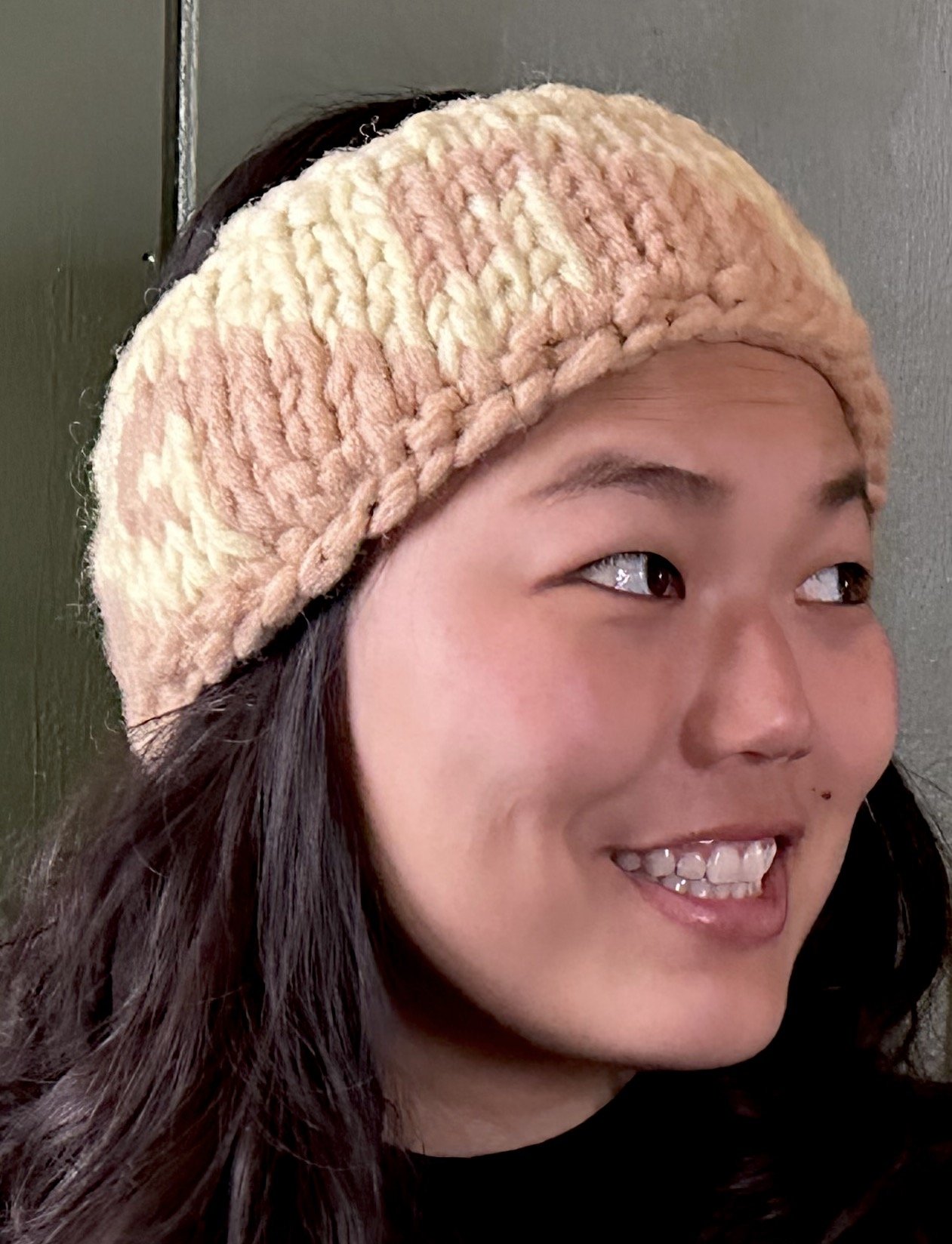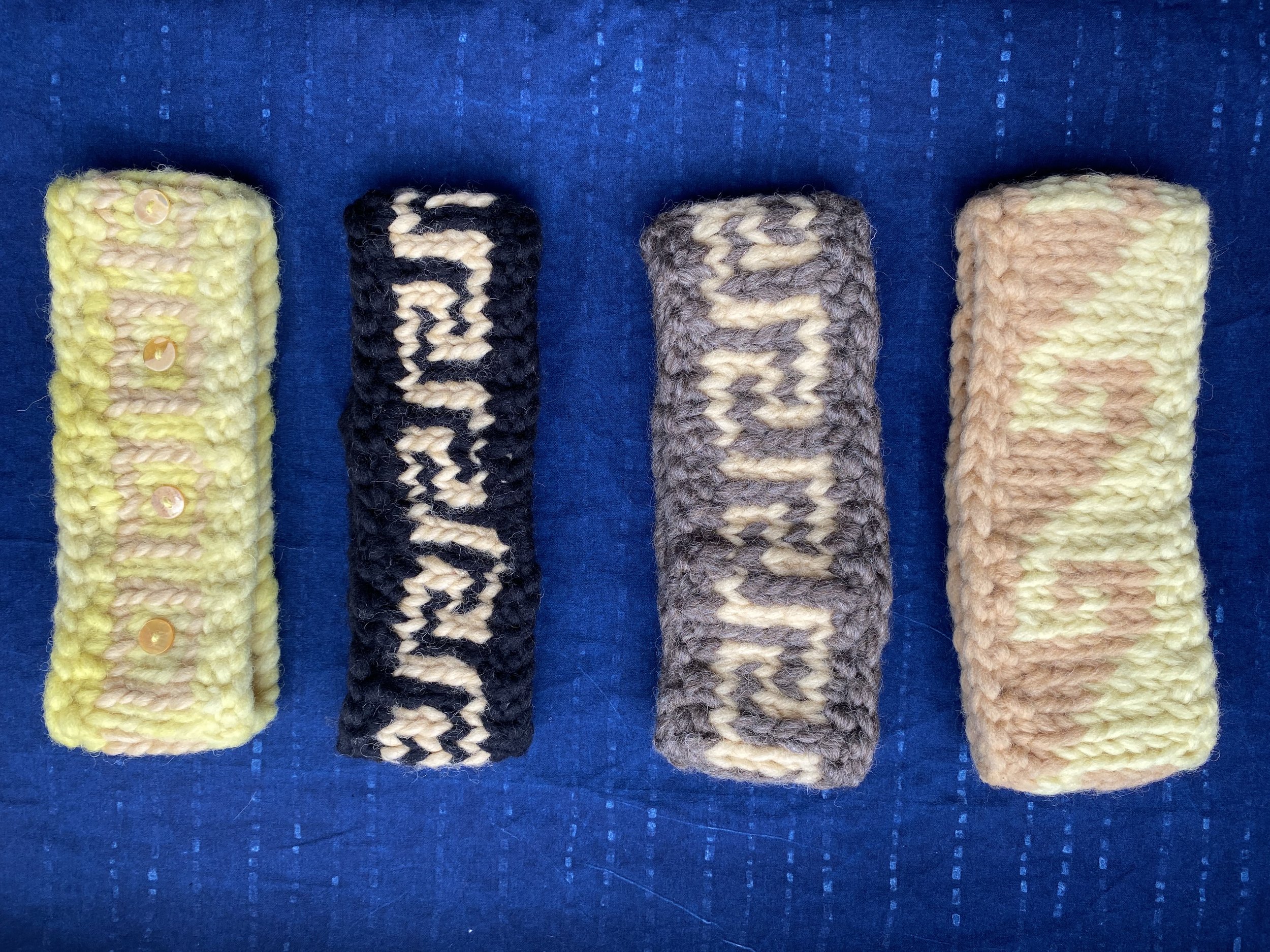 Image 1 of 5
Image 1 of 5

 Image 2 of 5
Image 2 of 5

 Image 3 of 5
Image 3 of 5

 Image 4 of 5
Image 4 of 5

 Image 5 of 5
Image 5 of 5






Haida, Wolf Moss-Dyed Wool Headbands
These 100 percent wool headbands were designed, handwoven, and dyed by Alice Montjoy of the Haida Gwaii Archipelago, using the lichen commonly known as “wolf moss” (Letharia vulpina). This branchy yellow-green species grows on conifers in such places as the Pacific Northwest where the indigenous Haida have lived for centuries.
I first encountered Haida art and handicraft when I lived in Seattle many years ago. The Seattle Art Museum and a number of art galleries downtown feature Haida pieces like totem wood carvings, dramatic red-and-black woven garments depicting highly abstracted animals like sharks and birds, and spruce root baskets and hats. So when I learned that wolf moss was commonly used as a dye by Haida artisans, I sought out living Haida artists to see if they still used it in their work today.
That led me to the artist and master weaver, Ariane Xay Kuyaas Medley. (You can read about her in the object description of the ghostface necklace here. ) Ariane, in turn, introduced me to her mother, Alice.
Alice offered to use wolf moss to make dyes in various shades and then weave them into headbands. As you can see, the lichen produces a wide range of colors, including the bright yellow for which wolf moss is famous.
The one-of-a-kind headbands feature typical Haida abstracted wave motifs (of the sort, coincidentally, also favored by the Etruscans) and were made with care by Alice. They feel nice on your head, not too snug, and thanks to the wool fabric and tight weave, are very durable.
The model is my good friend, the Brooklyn-based videographer, Nicole Ro.
These 100 percent wool headbands were designed, handwoven, and dyed by Alice Montjoy of the Haida Gwaii Archipelago, using the lichen commonly known as “wolf moss” (Letharia vulpina). This branchy yellow-green species grows on conifers in such places as the Pacific Northwest where the indigenous Haida have lived for centuries.
I first encountered Haida art and handicraft when I lived in Seattle many years ago. The Seattle Art Museum and a number of art galleries downtown feature Haida pieces like totem wood carvings, dramatic red-and-black woven garments depicting highly abstracted animals like sharks and birds, and spruce root baskets and hats. So when I learned that wolf moss was commonly used as a dye by Haida artisans, I sought out living Haida artists to see if they still used it in their work today.
That led me to the artist and master weaver, Ariane Xay Kuyaas Medley. (You can read about her in the object description of the ghostface necklace here. ) Ariane, in turn, introduced me to her mother, Alice.
Alice offered to use wolf moss to make dyes in various shades and then weave them into headbands. As you can see, the lichen produces a wide range of colors, including the bright yellow for which wolf moss is famous.
The one-of-a-kind headbands feature typical Haida abstracted wave motifs (of the sort, coincidentally, also favored by the Etruscans) and were made with care by Alice. They feel nice on your head, not too snug, and thanks to the wool fabric and tight weave, are very durable.
The model is my good friend, the Brooklyn-based videographer, Nicole Ro.
These 100 percent wool headbands were designed, handwoven, and dyed by Alice Montjoy of the Haida Gwaii Archipelago, using the lichen commonly known as “wolf moss” (Letharia vulpina). This branchy yellow-green species grows on conifers in such places as the Pacific Northwest where the indigenous Haida have lived for centuries.
I first encountered Haida art and handicraft when I lived in Seattle many years ago. The Seattle Art Museum and a number of art galleries downtown feature Haida pieces like totem wood carvings, dramatic red-and-black woven garments depicting highly abstracted animals like sharks and birds, and spruce root baskets and hats. So when I learned that wolf moss was commonly used as a dye by Haida artisans, I sought out living Haida artists to see if they still used it in their work today.
That led me to the artist and master weaver, Ariane Xay Kuyaas Medley. (You can read about her in the object description of the ghostface necklace here. ) Ariane, in turn, introduced me to her mother, Alice.
Alice offered to use wolf moss to make dyes in various shades and then weave them into headbands. As you can see, the lichen produces a wide range of colors, including the bright yellow for which wolf moss is famous.
The one-of-a-kind headbands feature typical Haida abstracted wave motifs (of the sort, coincidentally, also favored by the Etruscans) and were made with care by Alice. They feel nice on your head, not too snug, and thanks to the wool fabric and tight weave, are very durable.
The model is my good friend, the Brooklyn-based videographer, Nicole Ro.
